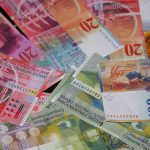The euro plunged sharply against the US dollar, the British pound and the Japanese yen on Thursday, after the European Central Bank unexpectedly reduced the benchmark interest rate to a new record low level, as the recent drop in inflation rate in the Euro zone to the slowest in four years posed a threat to banks objective to maintain price stability.
EUR/USD collapsed to a session low at 1.3355 at 12:50 GMT, also the pairs lowest point since September 18th, after which consolidation followed at 1.3377, still losing 1.01% for the day.
The European Central Bank, at its meeting today, decided to reduce borrowing costs by 0.25% to a new record low level of 0.25%. The central bank also maintained its deposit rate at zero and pared the marginal lending rate to 0.75%. The chances increased that the bank may consider using unconventional tools such as quantitative easing or a negative deposit rate, in case consumer prices continue slowing down or the economic recovery remains frail.
Last week it became clear that Euro zones annual rate of consumer inflation slowed down to a four-year low of 0.7% in October and the rate of unemployment remained at the highest level since the formation of the single currency bloc in 1999. The ECB strives to keep the index of consumer prices in proximity and under 2% in an intermediate term in order to ensure price stability.
Having emerged from the longest recession ever during the second quarter of the year, Euro zone’s economy is signaling frailty. The unemployment rate was reported to have climbed to 12.2% and the common currency has appreciated almost 5% against its major counterparts during the year, which might lead to loss of competitiveness of export-oriented companies.
In addition, earlier today it was reported that Germanys industrial production contracted in September, defying expectations, and raised concerns over the viability of Euro zones largest economy. According to data by Destatis, industrial output decreased 0.9% in September compared to August, after it rose 1.6% during the preceding month, while experts had anticipated that production will climb 0.2% in September. On annual basis, production rose 1.0% in September, which surpassed expectations of a 0.8% gain and Augusts revised up 0.9% gain (0.3% previously).
“Both traditional and unconventional monetary-policy tools have become impotent to kick-start the euro-zone economy,” said Carsten Brzeski, senior economist at ING Groep NV in Brussels, cited by Bloomberg. “Nevertheless, there is little worse for a central bank than having to admit that it has reached the limits of its zone of influence.”
Elsewhere, EUR/GBP cross tumbled to ten-month lows at 0.8312 at 12:50 GMT, after which consolidation followed at 0.8324, down 0.97% on a daily basis. EUR/JPY pair slid to one-month lows at 131.90 at 12:50 GMT, after which consolidated at 132.05, losing 0.96%.





